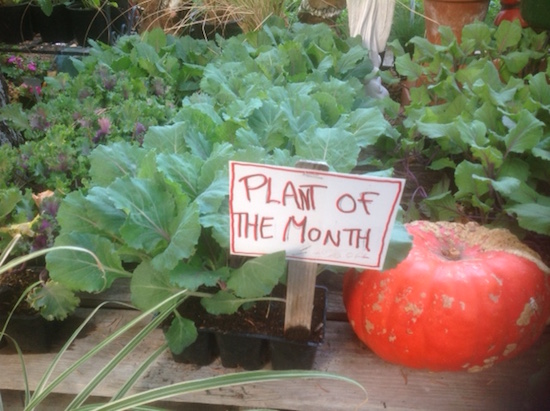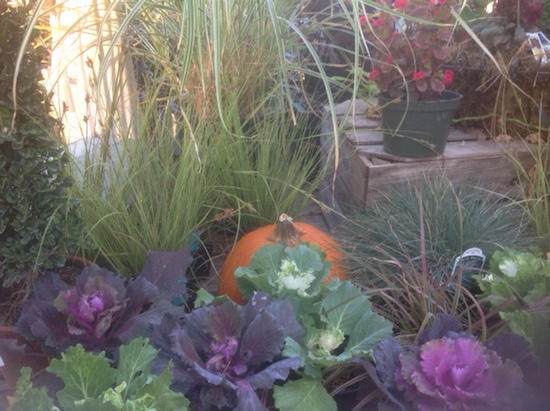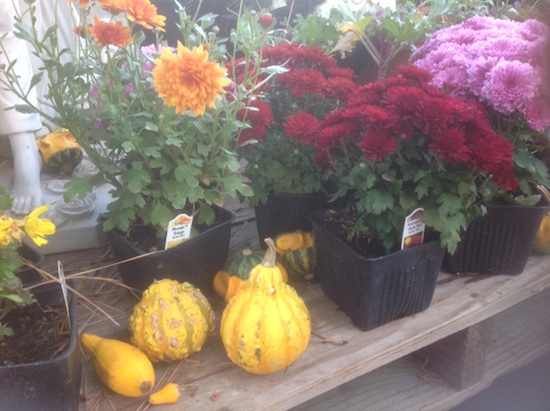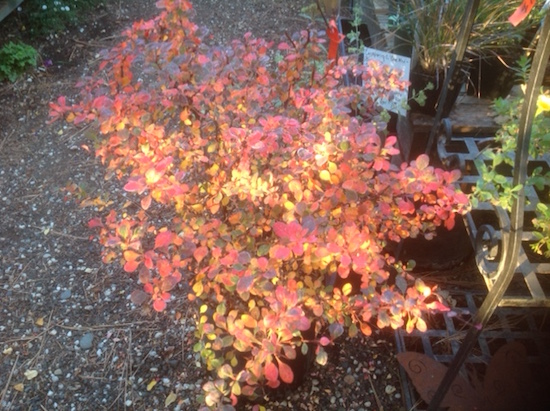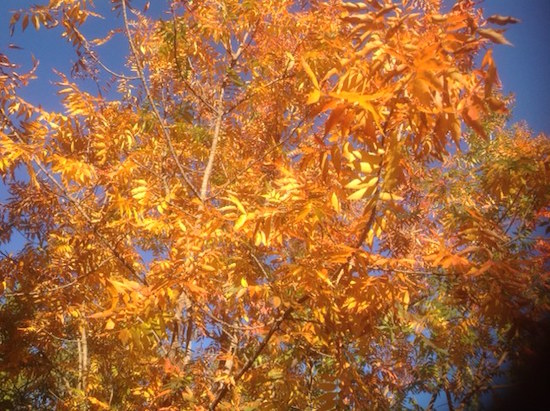Plant of the Month
Ornamental Kale and Cabbage
One of the best plants I know of to give color even in the darkest days of winter when pansies and other winter annuals are putting out few flowers, if any. These beauties pick up more color after frosts and are available in white, cream, pink, rose and purple hues. Plant in a sunny location but I have found they can look good in open shade too. Plant in the ground or in pots. Keep an eye out for aphids, cabbage worms, slugs, and snails because they also like them. Fertilize with a nitrogen fertilizer. These are not only ornamental but edible too even though a little tougher than the traditional edible types. They can be used in flower arrangements or singularly as a stand-alone cut flower in a vase. These usually start to ‘bolt’ in February, producing the classic Brassica family loose yellow flowers.
Specials
30% Off
All Iron Garden Art, Trellis’, Arches, Baskets, etc.
30% Off
Roses, Fruit Trees, (excluding Citrus and Olives)
Grapes, Berries, Daylilies, Hostas, Potted Peonies and
Rhododendrons in stock
$1.00 Off the Plant of the Month
November Newsletter 2017
First I want to start off by saying our winter hours begin on Sunday, Nov. 5, with the time change. Still open 6 days a week but only 6 hours from 10-4. Wednesday is still our closed day. We are often only open 10-4 on rain days so our winter hours might start a few days early as rain is expected for Friday and Saturday.
Onions and potatoes arrived. Garlic is going fast. We have shallots.
A cold front is coming in this week-end and here at the nursery we will be expecting freezing or near freezing temperatures when the skies start to clear. We have already been looking around at what we have that we will need and want to protect for winter. Here are a few tips. Take cuttings from your coleus and grow in water over winter or if in pots you can grow as a houseplant. Bring in any tender houseplants that you have had outside for the summer. Did you know you can pull your entire geranium plant, shake out excess soil and hang upside down in your garage? Plant out again after danger of frost has passed. My grandmother did this in Buffalo, NY where she had a basement and I remember them hanging there in the winter. A lot of succulents need protection too and even the cold hardy ones will benefit from being out of the wet, soggy weather. Bring under cover or inside. This works if they are in pots. (Not so well if in the ground.) We have a few varieties of non-cold hardy ferns that will need protecting as well. We always cover our citrus with frost cloth (N-Sulate works best) after spaying with anti-transpirant (AKA Cloud Cover) and this has worked very well for us. We sell both the cloth and the spray if you do not have them. If the winter is not too cold we get the flowering maples/abutilons to winter over just by having them off the ground and out of the open but sometimes we put them in with the citrus. Young olives and oleander often need protection and the frost spray works well, keeping them from getting desiccated in the cold. As some of you may recall we usually spray the whole nursery for winter to keep cold damage to our container grown plants to a minimum.
Winterize your irrigation too. I have already turned mine off after the rain and am hand watering my pots. Drain the lines if possible but for sure turn the main valve off and drain your valves to prevent them from cracking in the cold. There is a little ‘bleeder’ knob on top of the valve. If you open this the valve should release water that is inside. Bring in those battery timers as they are not designed to withstand freezing.
I just read a little article about how dogs are being trained to sniff out pests in greenhouses and nurseries. I do not mean rodents either. I mean insect pests like chili weevil and emerald ash borer. Others have been trained to sniff out invasives like star thistle and Chinese clover. They are beginning to train them to alert for disease in wildlife. Since we do not have a dog like that we still have to depend on our eyes. However, we had the invisible to the eye thrips this year along with a bumper crop of very visible leafhoppers, aphids and leaf and stem miners. November is the first month for dormant oil spraying to kill off, or at the very least diminish, these and other pests for next year. Mix with copper for disease control on all your fruit trees, grapes (a favorite of leafhoppers) and other shrubs and perennials. Don’t put diseased and infested stuff in your compost. Get rid of it. Our dahlias and tomatoes had thrips this year with excessive leaf drying and silvering of the foliage. This is the first year that I can remember having them and it took me a while to diagnose because as I mentioned before they are invisible to the naked eye. Follow up with another spraying around Jan 1st and a third in mid-February.
Do you want blue hydrangeas? Start applying True Blue now. Old fashioned hydrangeas bloom on old wood so you only cut back to the first set of fat buds. Those fat buds are next summer’s flowers. Plant spring-blooming bulbs like daffodils and tulips now. Nothing says spring like them. Cut back perennials and divide if needed. Cut back your lavender, being careful not to cut into bare wood as they do not recover. If they have gotten too woody consider replacing them. Again I will remind you to leave spring bloomers like lilacs, forsythia, and quince alone for now and prune after bloom. It’s not too early to prune your fruit trees. It is easy for time to get away from us if we have a bad winter so the sooner you get it done the better. Besides, there will be less to spray.
Potted, living conifers should be arriving this month but it could very well be closer to the end as shipping can be tight. We were not able to get any of the larger blue spruce. We scrambled for cut trees this year as our usual source could not supply us. We were able to pick them up locally too. We are now going to have to go to Oregon ourselves to pick them from another supplier and will do so after Thanksgiving to have them here for the 1st week-end of December, keeping our eye on the weather. This will be another year of cut tree shortages so even though we ordered more than last year we expect to sell out quickly. We also ordered a pallet of decorative, festive evergreens this year that are due to ship in a few weeks. These will be small potted plants ideal for table tops and holiday decoration. We just starting stocking budded Zygo Cactus, also known as Christmas Cactus.
Winter, which is short here by a lot of accounts, can leave the yard looking a little drab. One of the best annuals for color even in the darkest days of winter are the ornamental cabbages and kales, but they are not deer resistant. Consider silver dusty miller as a deer resistant alternative. I love the winter red berries on the Cotoneaster, but Pyracantha is more deer resistant. (Personally, the thorns on the Pyracantha make it on my ‘no plant’ list and I do not stock it at the nursery.) There is the Chinese Holly, which does not need a male and female to berry like a lot of the English ones. Eleaganus is on the deer resistant list and there is a gold and green variegated variety that grows to 6 ft. There are silver foliaged plants as well like Teucrium frutans, Lavender Silver Anouk and Artemisias. If you are warm enough the yellow bush daisy Euryops can bloom in winter, along with Erysimum Bowles Mauve. Several varieties of Rosemary have winter bloom. Hellebores are another perennial that blooms in the winter months and the shrub Grevillea usually starts flowering in late winter. Most of the above are on the deer resistant list.
Although a lot of the trees here have lost their leaves already or are in the process of doing so there is still lots of nice fall foliage to see. The Dogwoods, some of the Pistache, the Crape Myrtles, the Barberry and the Hawthorns are just starting to change. The Pistache in my yard are dropping fast but the maple is just beginning to change and should be glorious. The Ornamental Pears and the Japanese Maples are still green so here is to a few more weeks of constant color change and a fall look at the nursery.
